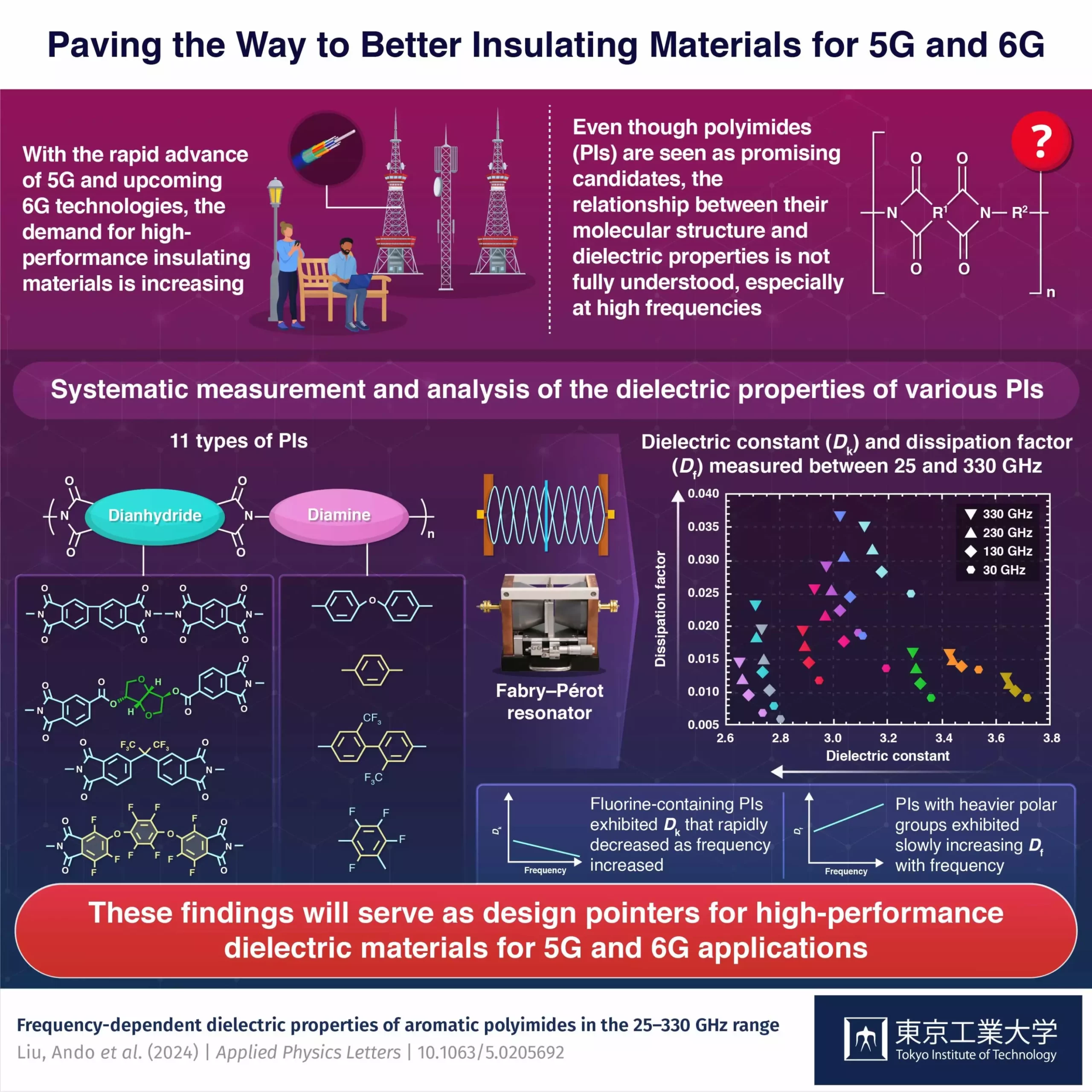In the ever-evolving world of telecommunications, researchers are constantly pushing the boundaries of technology to improve wireless communications. With the advent of 5G and the future promise of 6G technologies, one of the biggest challenges that scientists and engineers face is the detrimental effects of operating at extremely high frequencies. Issues such as signal attenuation and interference become more prominent as frequencies approach the terahertz range, making it difficult to maintain signal integrity.
In the quest to address these challenges, researchers from the Tokyo Institute of Technology have turned their attention to polyimides (PIs) as potential insulating materials for high-frequency operation. Led by Professor Shinji Ando, the research team published a paper in Applied Physics Letters on June 6, 2024, highlighting the benefits of polyimides for use in future telecommunications technologies. Polyimides are known for their excellent thermal stability, mechanical toughness, flexibility, lightweight, and favorable dielectric properties, making them a promising candidate for high-end 6G devices.
The research team conducted a study to measure and analyze the dielectric properties of 11 different polyimides with varying molecular structures. Using a Fabry-Pérot resonator, a specialized device for measuring the dielectric properties of thin films in the 110-330 GHz range, the researchers were able to determine the dielectric constant (Dk) and the dissipation factor (Df) of the polyimides. These values are crucial for minimizing signal loss and maintaining signal integrity at high frequencies, making them essential parameters for selecting materials for future telecommunications applications.
The study revealed that polyimides with higher fluorine content exhibited lower Dk values, indicating better dielectric properties for high-frequency operation. In particular, a perfluorinated polyimide demonstrated significantly lower Dk and smaller Df compared to other polyimides, showcasing its potential as a highly efficient insulating material. Additionally, the researchers found a negative correlation between the increase in Df and the polar fraction of the polymer, providing valuable insights into the relationship between molecular structure and dielectric properties.
The results of this study have important implications for the development of high-performance polymer-based insulating materials for 6G technologies. By shedding light on the dielectric qualities of polyimides, researchers hope to pave the way for faster and more reliable telecommunications in the terahertz range. Further research, including spectroscopic studies in the THz range, will be necessary to identify the best type of polyimides for these purposes. With continued efforts and advancements in material science, engineers may soon be able to harness the full potential of polyimides for the next generation of high-frequency wireless communications.


Leave a Reply